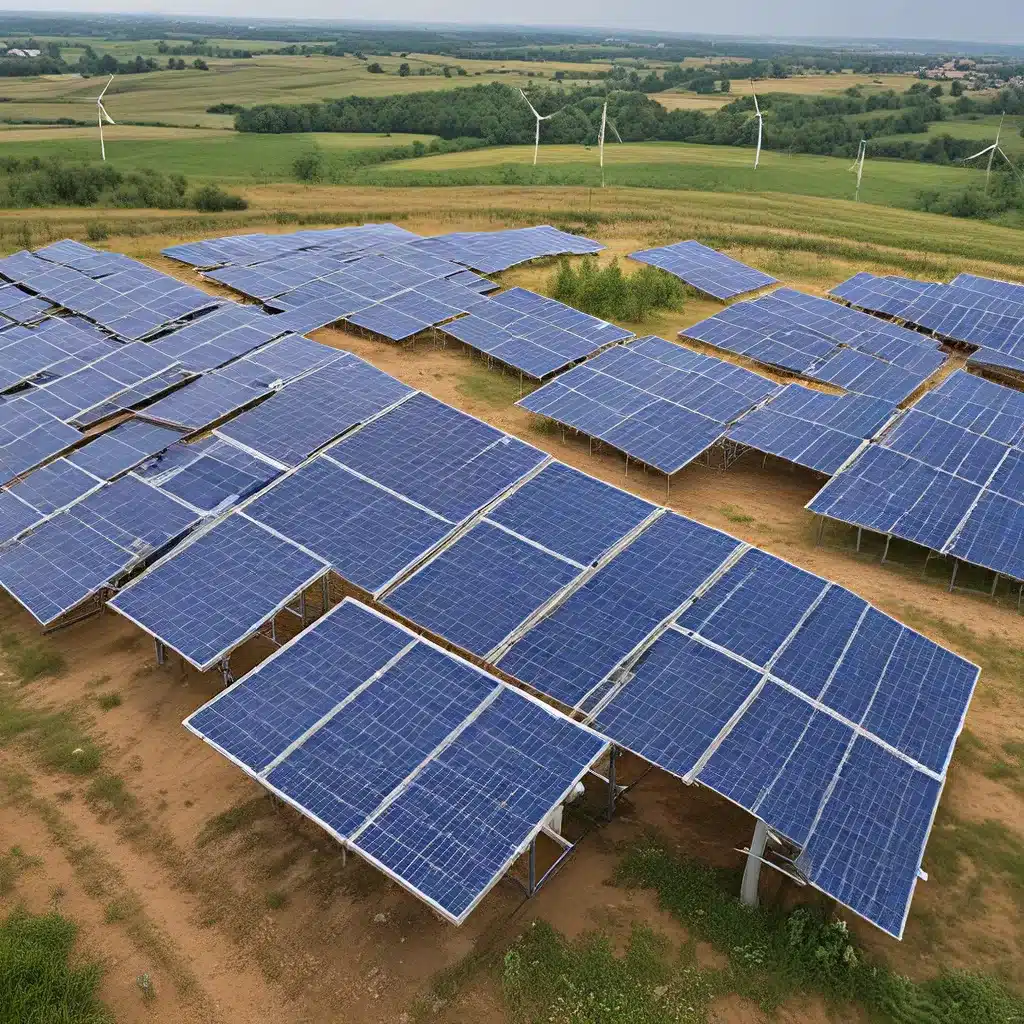
The Potential of Nuclear-Renewable Hybrid Systems
As I delve into the exciting world of renewable energy solutions, I can’t help but be fascinated by the synergies between nuclear power and renewable energy sources. It’s a fascinating intersection that holds the promise of optimizing efficiency and reducing greenhouse gas emissions in ways that could truly transform our energy landscape.
Let me start by painting a vivid picture. Imagine a hybrid energy system that seamlessly combines the reliable baseload power of nuclear reactors with the intermittent but renewable energy of wind, solar, and other clean sources. This harmonious integration can not only enhance the efficiency of renewables but also address the need for grid flexibility and optimal use of investment capital. It’s a game-changer that could pave the way for a more sustainable energy future.
Balancing Act: Nuclear Power and Renewable Energies
One of the key advantages of this nuclear-renewable hybrid approach is the way it leverages the flexible operation of nuclear power plants. You see, while renewable sources like wind and solar are inherently intermittent, nuclear power can step in and perform a balancing act to keep the grid stable and efficient.
As the IAEA experts explain, nuclear power plants can engage in “load following” – adjusting their output to match the fluctuating energy demand. This flexibility allows them to enhance the efficiency of renewables by smoothing out the intermittency and maintaining a stable, reliable power supply.
It’s a delicate dance, but one that holds tremendous promise. By integrating nuclear and renewable sources, we can significantly reduce greenhouse gas emissions compared to conventional fossil fuels. And the benefits don’t stop there – this hybrid approach also opens up opportunities for cogeneration, where the heat generated by nuclear plants can be used for a variety of industrial applications, from seawater desalination to hydrogen production.
Overcoming Challenges and Identifying the Business Case
Of course, as with any transformative technology, there are challenges to overcome. The experts at the IAEA meeting highlighted that the greatest challenge is “identifying the business case and profitable option for these nuclear-renewable hybrid energy systems.”
For fossil-rich nations, there’s also the question of how the transition to hybrid systems would impact their existing industries, jobs, and resources. As Shannon Bragg-Sitton from the Idaho National Laboratory explains, “We are not looking at eliminating fossil resource use but changing how we use it. This carbon resource is very valuable and could be converted to higher value products such as plastics or chemicals and other products that can be utilized beyond heat.”
Clearly, there’s a need for further research and development, as well as policy incentives and economic trade studies to better determine the cost and competitiveness of these hybrid systems. But the potential rewards are immense, both in terms of environmental sustainability and economic viability.
Cogeneration: Harnessing the Power of Nuclear and Renewables
One particularly exciting aspect of nuclear-renewable hybrid systems is the potential for cogeneration – the simultaneous production of electricity and other forms of useful energy, such as heat, steam, or hydrogen. As the IAEA experts noted, cogeneration has been used for decades in many countries, where the heat generated by nuclear power plants can be utilized for cooling, heating, process heat, desalination, and even hydrogen production.
Take the example of Pakistan, where the country’s nuclear power plants are located in coastal areas – prime locations for both wind farms and solar energy. As Arif Arif, a nuclear designer at the Pakistan Atomic Energy Commission, explains, “We want to consider nuclear-renewable hybrid energy systems by installing wind farm technology and photovoltaic cells. Our nuclear power plants are located in coastal areas which offer good opportunities for wind farms and solar energy as well.”
By harnessing the synergies between nuclear and renewable sources, Pakistan and other countries can optimize their energy mix, reduce emissions, and explore innovative applications like nuclear desalination and reverse osmosis technology. It’s a transformative approach that holds immense promise for the future of sustainable energy.
The Road Ahead: Navigating the Future of Hybrid Energy Systems
As I delve deeper into this topic, I’m struck by the sense of excitement and possibility surrounding nuclear-renewable hybrid energy systems. The IAEA experts who gathered in Vienna to discuss these innovative concepts were clearly energized by the potential, identifying key gaps that could be addressed through international cooperation and sharing valuable insights on the requirements, challenges, and potential solutions.
At Firewinder, we’re thrilled to be at the forefront of this energy revolution, providing cutting-edge renewable energy solutions that can seamlessly integrate with nuclear power and other clean technologies. By exploring the synergies between different energy sources and harnessing their collective potential, we can transform the way we power our world, making it more efficient, sustainable, and resilient than ever before.
Of course, the path ahead is not without its uncertainties. As the experts noted, further research and development, as well as appropriate policies and market incentives, will be crucial in unlocking the full potential of these hybrid energy systems. And we’ll need to carefully navigate the economic and social implications of this transition, ensuring that the benefits are shared equitably and that no one is left behind.
But I’m optimistic and energized by the possibilities that lie before us. By embracing innovation, fostering international collaboration, and prioritizing sustainability, I believe we can redefine the future of energy and create a brighter, cleaner world for generations to come. It’s a challenge I’m eager to tackle, and I invite you to join me on this transformative journey.

